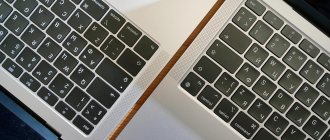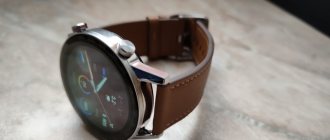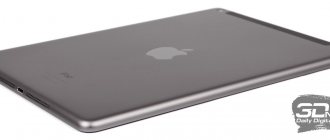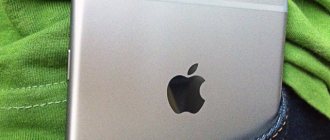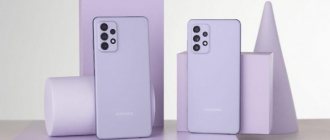The spring 2010 13-inch MacBook Pros were remarkable and surprising: they used an outdated Intel Core 2 Duo-based chipset. Such an island of archaism in a rapidly changing world, even bring excursions... It might seem to some that the bad old days had returned - but everything was simpler, Apple had a good reason to do just that. It was touched by someone else's war, between Intel and NVIDIA. In 2008, the NVIDIA GeForce 9400M, integrated into a chipset based on Intel Core 2 Duo, significantly outperformed its Intel counterparts, causing the latter all kinds of damage imaginable. This can only be washed off with blood.
In 2010, Intel struck back with crushing force - refusing NVIDIA a license to create chipsets based on next-generation processors. Attempts to challenge this decision in court were unsuccessful.
The 13-inch MacBook Pro only fit within its cost limits when using cheap integrated graphics. But neither the technical level nor the performance of integrated graphics from Intel suited Apple anymore. NVIDIA had a wonderful solution that was superior to the NVIDIA GeForce 9400M - but only as part of a chipset based on the ancient Intel Core 2 Duo “Penryn”.
Apple chose high-quality graphics...
This is the eleventh part of the series about the MacBook Pro, the previous parts of the series are here:
First part: The very second Intel Mac; Part two: MacBook Pro: debut; Third part: April 2006: MacBook Pro 17” and “school of a young fighter”; Part four: The next MacBook Pro, as always in October; Fifth part: MacBook Pro “Santa Rosa”: is this a speed bump?; Part six: MacBook Pro update, February 2008; Seventh part: MacBook Pro (NVIDIA) – made of a solid block of aluminum; Part Eight: 17” MacBook Pro and the latest MacWorld...; Ninth part: MacBook Pro (Mid 2009): 13-inch...; Tenth part: MacBook Pro (Mid 2009): 15- and 17-inch….
List of parts of the series about PowerBook G4 here.
Result
Despite everything, the small MacBook Pro with model ID MacBookPro7.1 turned out to be very good. In serious computing tasks, it lagged behind its older brothers, but it managed to cope with them. Everything in the world is relative. However, they were not his main goal.
The result was a very balanced computer, lightweight and reliable - the Intel Core 2 Duo “Penryn” was far behind the period of childhood illnesses.
And the NVIDIA GeForce 320M was a worthy replacement for the GeForce 9400M, which has been revitalizing graphics on economy-class Macs since 2008. Both were inferior to “real” GPUs in almost every respect, were rather weak for “advanced” games and were not seriously considered on “serious” forums - but they did what they were created for well.
The GeForce 320M outperformed the GeForce 9400M by 80% in some tests, but only Apple knew what those tests were. If anyone had disputed this assertion, evidence would have been presented. 52.8 Gigaflop/s (instead of 44.8 for the GeForce 9400M), 48 cores, 40 nm technology (instead of 65 nm for the GeForce 9400M), 32 computing pipelines instead of 24.
Not all comparisons were so clear-cut; for example, the clock speed of the GeForce 320M was only 500 MHz (instead of 580 MHz for its ancestor).
The GeForce 320M was named among the factors that made it possible to increase the operating time on a single battery charge from 7 hours to 10. This increase was one of the most important trump cards of the new MacBook Pro; in tests outside the company, no one was able to achieve 10 hours, but the very fact of the increase (up to 8 .5 hours) was confirmed.
Prices for the new MacBook Pro started at $1,199, it was interesting and mysterious, it even had “trump cards” that its potential buyers willingly believed in - and what else is needed for good sales?
First impression
There are also a number of not entirely obvious disadvantages of Apple laptop products, but that’s not about that now. Until recently, I myself was not eager to buy a MacBook, and such an old one: 2010, and even more so. My opinion about the macbook 2010 series, including the “Unibody” series, was changed by a series of videos by a YouTuber under the nickname “CompManiac”, who is now known on YouTube as “Roma, just Roma”. This person’s story featured a slightly different, slightly weaker Apple laptop, but still. Despite the fact that Roma’s copy was weaker, had 1.8 GHz on board and DDR2 memory, it still coped with everyday laptop tasks: surf the Internet, watch movies, videos on YouTube, type text, etc. But my old netbook from Acer could no longer do this (with at least mediocre quality, of course, you can watch TV series and YouTube, but 240 pixels is too low quality for 2022, and the neutered netbook processor itself could not cope with its tasks ). Moreover, my netbook had the same price, about $90.
Without hesitation, I listed my netbook on Avito, and in just a few days I managed to sell it to another survivalist from the bottom of netbook oblivion for 4,500 rubles. And just a few days later, I already had a good, albeit old, nine-year-old MacBook Unibody A1342 in my hands! You can (and should) say that I was lucky, and very lucky!
Over nine years, only 250 cycles, the laptop itself works great on the battery for about four hours without recharging. Let this be a happy exception to the rule: the older the laptop, the weaker the battery. Let's assume that the previous owner, and this was the girl from whom I exchanged 5 thousand rubles for this unit, in turn bought it from the first owner for 30 thousand wooden ones. True, this was 8 years ago.
The A1342 is a fairly quiet laptop. And not the hottest. At the minimum speed of the processor cooler fan, it is only 2000 rpm. And at the same time, the MacBook is quite cold: only the processor heats up to 55-60 degrees, everything else is as cold as your ex’s heart.
MacBookPro7,1
Chipset from NVIDIA, Intel Core 2 Duo “Penryn-3M” processors, with 3 MB of second level cache. The model variants used two modifications of Intel Core 2 Duo – P8600 with a clock frequency of 2.4 GHz and P8800 with a clock frequency of 2.66 GHz.
The clock frequency of the front system bus is 1066 MHz. The base package of both options included 4 GB of PC3-8500 (1066 MHz) DDR3 SDRAM, which could officially be increased to 8. Starting with 10.7.5, after the EFI upgrade, this MacBook Pro model worked perfectly with 16 GB. In the 15- and 17-inch models of 2010, achieving this turned out to be much more difficult, almost impossible.
The 2.4 GHz option included a 250 GB disk (5,400 rpm), which could be replaced in the online store with a 320 or 500 GB disk with the same rotor speed for an additional $50 and $150. But the list of options did not end there: for $350, instead of a disk, you could install an SSD with a capacity of 128 GB, for 800 - 256 GB, and who doesn’t mind $1,450 (the price of the basic set is 1,199!) - and 512 GB.
The 2.66 GHz option included a 320 GB disk (5,400 rpm), replacing it with a 500 GB disk cost $100, replacing it with an SSD of 128, 256 and 512 MB cost 300, 750 and 1,400 dollars.
The basic kit with 2.66 GHz cost $1,499.
The optical drive is common for the era of victorious wireless communications - DL SuperDrive, with slot loading. Users with higher demands (which, oddly enough, this model had in abundance) replaced the optical drive with an SSD.
On the case, in one row and close to one another, there were connectors: MagSafe (for connecting a power supply), Gigabit Ethernet, Firewire 800, Mini DisplayPort (now also transmitting an audio signal and supporting HDMI), two USB 2.0 ports, a slot for SD -cards, sound input and output.
Proximity is wonderful, but in our case it was constraining and limiting.
AirPort Extreme (802.11 n, with a/b/g support) and Bluetooth 2.1 + EDR – naturally there were, and naturally built-in.
Appearance of Macbook Unibody a1342
He's handsome. He's just beautiful. It’s not that I’ve become a hostage to Apple products: I just think that the mid-2010 MacBook for 5,000 rubles is much better than the Acer Aspire One of the same time or even later. The MacBook may be more massive and heavier, but it is made of better quality.
What can you say about the MacBook? Quite large, thick and clumsy in appearance - compared to the new metal counterparts. The body is made of white plastic, which has been preserved quite well; again, only two careful owners worked with this unit before me. As before, the Macbook can be opened with one finger, the lid with the display does not play, does not twitch when carrying the MacBook in the open state, the keys are intact, not frayed, without yellowing. The designers have created an overall streamlined laptop, but the edges of the device are quite sharp: not that this is a big hindrance, but still.
Perhaps this is one of the biggest problems of this device, or rather the only problem. Apparently, everything was not always good with this Apple laptop, it was driven seriously, which is why it overheated and mother physics did not leave a chance for the rubber cover of the tray: it stretched and is not going to tighten.
Graphic arts
The screen has a diagonal of 13.3 inches (33.8 cm), only glossy (matte options were not available on the 13-inch model), with a “native” resolution of 1280x800 pixels. 18-bit color, without IPS, but with LED backlighting. The screen is small, but not bad and durable.
Closed lid mode - in which the external monitor was the only consumer of GPU resources - was supported. To enable this mode, you had to do several strange things, in a certain order:
— Connect an external monitor, keyboard and mouse; — Close the lid; — Put MacBook Pro to sleep; - Wake him up...
Some kind of Hogwarts. But the picture on the big screen became more dynamic and beautiful. And to exit the mode, you had to (1) open the lid, (2) put the MacBook Pro to sleep and (3) wake it up.
The external monitor supported a resolution of up to 2560x1600 pixels; adapters were offered in the online store for DVI, VGA and Dual-Link DVI; an adapter for HDMI was offered to be purchased independently.
I won’t talk about games and graphics performance, but the 13-inch MacBook Pro supported OpenGL 3.3, CUDA, and OpenCL at a decent level.
SSD for Macbook Unibody a1342
Let's not change traditions, and offer a worthy replacement for the 250-gigabyte old man: let it be a solid-state drive (in common parlance - SSD) of 240 gigabytes: after all, we need a lot of space for applications, photos, movies and music. There are a lot of options when choosing a manufacturer: you can choose an expensive branded option, which in price can be comparable to the price of the Macbook itself, and this is not our choice.
We can be smarter and can buy an SSD using cashback services, for example, LetyShops. This service will allow us to return part of the funds from the purchase to our account, and then withdraw them to the card. We have decided on this, now we will look for a site for the best purchase. Several options immediately come to mind: the Chinese, the local flea market (we will include everything here: Avito, Yulu, other applications, advertisements in VKontakte communities, on the fence, etc.), local electronics hypermarkets, as well as discounted goods in these same hypermarkets. I'm inclined to choose the latter option and here's why.
Firstly, it is clearly faster than waiting for delivery from the Chinese. Secondly, this is a safer purchase choice, because at flea markets, let’s say, honest people do not always sell. Thirdly, we remember about expensive branded models and immediately forget about them.
By the way, here are several options from different sites, you can choose for yourself: what you like best and what you have enough money, effort and time for. Prices are valid for early to mid-October 2022. If something changes radically, let me know in the comments
